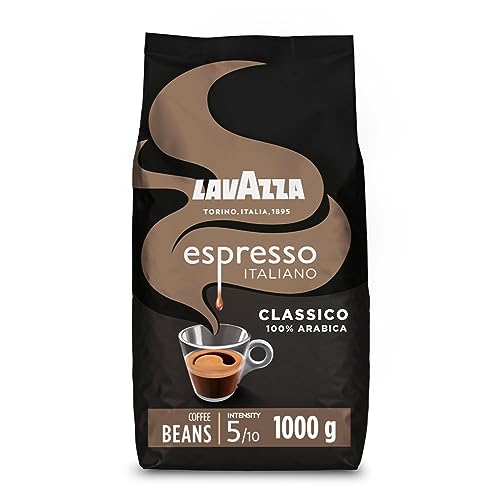What's The Job Market For Coffee Beans Types Professionals?

Coffee Bean Types: Arabica, Robusta, Liberica, and Excelsa
You probably already know that different varieties can produce distinct flavors. Read on to learn about four of the most popular varieties: Arabica, Robusta, Liberica and Excelsa.
Excelsa beans are a variety of Liberica that is grown exclusively in Southeast Asia. They have a more fruity and tarter taste profile, and are often added to blends of beans to add depth.
Arabica
Arabica is the most well-known coffee in the world accounting for 75% of all global coffee beans produced. Arabica beans have a sweeter and less sour flavor than Robusta and are available in a variety of flavour profiles. The flavor and aroma of coffee are affected by the conditions under which it is grown and the processing methods used.
buy coffee beans near me " originates from the Arabic word meaning berry. Coffee beans are actually seeds which grow inside bright red berries. It is believed that ancient Ethiopian shepherds noticed that their goats were energized after eating these fruit, and the cultivation of coffee soon began to spread throughout the world.
Coffee beans can be grown at high altitudes, and are capable of flourishing when exposed to cold temperatures and lots of rain. This is one of the main reasons why Arabica is regarded as the most delicious coffee.
Many specialty coffee shops and roasters concentrate on the ethical source of their arabica beans, by emphasizing fair wages for farmers and sustainable farming practices. These companies blend arabica beans in order to create unique specialty coffees, which can be used in many different brewing techniques. Blending allows control over the aroma, flavor and body as well as acidity of coffee. It is often preferred to achieve an even and consistent taste that appeals a wide market.
Robusta

Robusta beans (Coffea canephora) are the second most popular type of coffee bean grown across the globe. They contain more caffeine per bean and are more protected against diseases and pests. They also contain higher levels of chlorogenic acids, which are naturally-occurring antioxidants. However, these acids may cause oxidation in the coffee brewing process and may produce undesirable flavors.
The plant is more durable than the arabica and may grow in less favorable environments. It can tolerate higher temperatures and thrives in direct sunlight. It is faster growing and produces more coffee per plant than arabica, making it a more cost-effective crop to cultivate.
While it may seem counterintuitive Robusta beans are frequently blended with arabica to make coffee blends. If you see the names of countries such as Uganda or Kenya on a coffee bag, it's likely that there's some Robusta in there as well.
While some roasters use exclusively arabica beans, the majority use combine both varieties to lower costs and ensure the quality. To preserve the integrity of flavor it is recommended to select a high quality bean from a trusted source. This can be achieved by purchasing your beans direct from farmers.
Liberica
Liberica beans have a shape like a football, which is why they are different from other coffee beans. They have a distinctive aroma that is floral and fruity with the smoky notes. They are often paired with other coffee bean varieties to provide a fuller, more robust flavor.
Liberica coffee beans can be found in West Africa, Malaysia (Borneo) and Southeast Asia. They are well-adapted to humid, hot climates and can grow at low altitudes. They are also more resistant to diseases than Arabica or Robusta.
These qualities make them ideal for growing at home. You can purchase seeds on the internet from a variety of sources, but it is best to buy locally-owned producers to ensure the quality of the beans. The ideal conditions to grow Liberica coffee include fertile, deep volcano soils with moderately acidic and adequate annual rainfall.
Excelsa is a different variety of coffee bean. It was previously classified as a separate species, but has since been classified as a Liberica variant. These oval-shaped coffee beans are found on large coffee plants that can reach 20-30 feet in height at moderate altitudes. Their distinctive flavor is tart and sour, making them a popular option for blends that are house-made. They are also lighter in scent and caffeine than Arabica and Robusta and Robusta, yet they have a distinctive taste.
Excelsa
Excelsa coffee beans aren't as common as Arabica and Robusta although they're fourth popular. In fact, they were considered an individual species of coffee plant until 2006 when they were changed to a synonym for Coffea liberica var. dewevrei. They are produced in Southeast Asia today and account for 7% the world's production of coffee. The beans have a distinctive teardrop shape and carry an intriguing dark flavor. They're frequently used in blends to add extra body and a delicious tart, ripe fruit flavor.
Arabica beans are the most well-known and are renowned for their sweeter flavor. They thrive at higher altitudes and are able to thrive in warm, tropical climates. They have a little acidity. If they are brewed correctly and roast properly they may impart notes like chocolate, nuts or even fruit.
Robusta is the second most adored coffee in the world, and is responsible for 40% of the coffee consumed around the world. Robusta is rounder and smaller, yet they contain twice as much caffeine than Arabica. They also taste bitterer than the other two types and have an earthy and woody taste.
After having a better understanding of the four most common types you can now select your favorite brew. If you're looking for a silky, delicate flavor, opt for an arabica or a blend of robusta and arabica beans.
